Extravagant Engineering
Did you know engineers aren’t just the people who drive the train? They are also builders! Below are activities that all have an Engineering theme. These activities include things that will help your child develop fine and gross motor skills, problem-solving and engineering skills, and can help them engage in cooperative play, while fostering creativity and perseverance. Each theme also comes with recommended literature and movie connections. Feel free to throw in your own activities that might relate, and don’t forget to post your results to social media and tag @discoverymuse to share with everyone else!
Art Activity/Fine Motor Activity – Castle Building
For this activity, you’ll need to collect some recycled materials, paper, tape, scissors, coloring materials and imagination! You might also want to collect some items to be used in the decoration of your castle once it is constructed.
Castles were popular in Europe in the Middle Ages (aka Medieval Times), between 5th Century to the 15th Century. That’s why there aren’t any real castles in America – because the people who lived here during that time were Native Americans, who built out of wood and fur.
Directions
- Consider what materials might work best to build your castle walls. Shoe boxes, shipping boxes and cereal boxes are all perfect for this construction project.
- Once you’ve chosen your material for walls, think about how your castle entrance might work. Many castles had wide doors, gates or drawbridges or doors released by pulley. Where will your castle entrance be?
- After deciding on your entrance type and location, consider the other parts of a functional castle. There should be a stable, a royal quarters, a castle walk (to view any oncoming enemies), a great hall, and a courtyard. What else would you like to add? A chapel? A Blacksmith? A large kitchen? A training area for soldiers? Towers? A mermaid statue?
- When you are finished with the inside of your castle, consider decorating the outside. What will your castle be made of? Stones, bricks, wood, iron? Decorate the outside to look like your desired material. When you get to the top, make sure to place your kingdom’s flags on the castle walk and any towers to let everyone know who owns the castle.
- If you don’t have any figurines that can fit into your castle, you can always create some using paper and coloring materials (almost like a paper doll?).
Science Experiment – 21 Elephants on the Brooklyn Bridge
The Brooklyn Bridge, opened on May 24, 1883, was built by the Roebling family, and its chief engineer was a woman! Emily Roebling was the third chief engineer (she replaced her injured husband, who had replaced his injured father!), and was the person to see the bridge through its completion. Measuring 5,989 feet long, it spans the East River between Manhattan and Brooklyn in New York City. It is a suspension bridge with several large pillars holding up the steel cables. The unique design includes a walking path between the two lanes, a sitting area in the center of the bridge, and several compartments that have been used to store wine, medical supplies and even food!
When it was first opened to the public, there was a great deal of skepticism over whether it would be safe enough to hold weight. Suspension bridges were a newer style of bridge-building. People were afraid to ride over it in horse-drawn carriages (cars were not invented yet), let alone walk over it. In fact, a few days after the opening, a moment of panic resulted in a stampede of people trying to get off the bridge.
To foster people’s trust in the construction, the city called on P.T Barnum to escort 21 elephants across the bridge. What an amazing sight that must have been!
Try to construct a bridge that is wide enough to allow two “lanes” of traffic and long enough to hold 21 “elephants”. Those elephants can be in the form of 21 bolts, lego people, jelly beans, or whatever else you have accessible. Can your construction hold the weight?
Count how many pieces you used to build. How many pieces can you stack before they fall down?
Fun Fact: Viola Gentry and Elinor Smith flew planes under the Brooklyn Bridge during the 1920s. Is your bridge high enough that you can fly a plane under it?
Physical Activity – Fort Building
Get some of those wiggles out while learning a little about construction, creative engineering, and using resources strategically. Build a blanket fort together!
- Collect some lightweight blankets and sheets, as well as clips, rubber bands, and clothespins.
- Find a suitable area to design your blanket fort. This can be in the living room, a bedroom, the basement, or even outside on a nice day! Make sure the area is cleaned up first. No one wants to step on a lego while creating their fort!
- Relocate some chairs, stools, couch cushions and pillows to help with the construction.
- Drape blankets and sheets on chairs, across the back of couches, and attach with clips and clothespins, or use rubber bands on the tops of chairs, doorknobs, or bedposts.
- Once your fort is to your liking, make sure to add comfortable touches inside – place pillows in the fort for sitting on, stuffies to keep you company and maybe lights (but sometimes the dark is just as fun!)
- It’s okay to take your blanket fort down. The best part is that it can always be reconstructed, and each time it can look a little bit different. That’s the most fun about engineering!
Conversation Starters and Research Questions
- What are your favorite building materials? What have other people in your family used to build things?
- Have you been over a big bridge before? Where was that? Check out the Chesapeake Bay Bridge – it has tunnels under the water and over it!
- What do you think it would be like to live in a castle? With no running water, heaters or air conditioning? 😉
- If you could design and build your perfect home, what would you include?
- Before construction equipment became popular, how were things built? Castles? Homes? Forts during the early Colonial period?
- Why do you think building materials changed through the years? Why do you think some people build with wood, while others use brick or stone?
Videos and Websites
- Medieval Castles Interactive Site: https://www.dkfindout.com/us/history/castles/
- What Makes Bridges Strong? https://youtu.be/oVOnRPefcno
- Pasta Bridges: https://youtu.be/xN0poIrm0q8
- Emily Roebling Facts: https://youtu.be/DyBXZvOqoNQ and https://youtu.be/d_2tnDwgiLE
Literature Connection:
Because we know you’re stuck at home with limited access to movies and books, we tried to compile a list that connects to today’s theme that you might already have in your collection or be able to access online. These include:
Books:
Secret Engineer: How Emily Roebling Built the Brooklyn Bridge by Rachel Dougherty
The Fort That Jack Built by Boni Ashburn https://youtu.be/yY1OA5zfbrY
Fort-Building Time by Megan Wagner Lloyd https://youtu.be/CaozZPlbW-8
How a House is Built by Gail Gibbons https://youtu.be/ElKHrIUlswU
If I Built a School by Chris Van Dusen https://youtu.be/vgqt0POTSVQ
Rosie Revere, Engineer by Andrea Beaty https://youtu.be/r5yZ8K7pb0Y (This video is an astronaut reading aloud from the International Space Station!)
Iggy Peck, Architect by Andrea Beaty https://youtu.be/8tk_nglNLQ0
If you are able please consider making a donation to sustain our non-profit museum through this uncertain time


